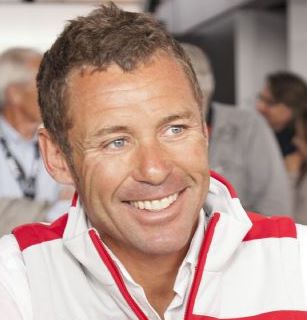Rolex looks back and forward at LeMans
 |
| Tom Kristensen has won LeMans a record 8 times |
Since Rolex became the Official Timekeeper at the 24 Hours of Le Mans ten years ago, a lot of changes have taken place not only on the track, but also in regards to automotive technologies and driver preparation for this famous race. Record-winning Dane Tom Kristensen, who has won this long endurance race no less than eight times, took a look back over these past ten years but is also keeping his eyes on the future: with the introduction of the FIA World Endurance Championship, which will kick off next spring, the importance of this kind of racing will only intensify.
From a technical perspective, the biggest change to take place over the past decade came some five years ago, when Audi decided to race endurance events with Diesel-powered cars for. While diesel-run cars raced at Le Mans and, among other events, the Indianapolis 500 as early as the 1950s, these entries did not have a significant future at the time. Yet the Audi diesel debut at the 12 hours of Sebring in 2006 resulted in an overall win and the car won again some months later at Le Mans. In 2007, Peugeot announced their return to endurance racing, also using a Diesel-fuelled car. It took the French manufacturer two years before they had their first win but from then on, the main battle at international endurance races became a two-way fight: Audi vs. Peugeot, two diesel-powered teams.
 |
| Rolex has sponsored the LeMans classic for 10 years |
This year, the 10th anniversary year for Rolex at the 24 Hours of Le Mans, also sees new technologies entering the race with a hybrid-powered car on the entry list for the first time. The Oreca Swiss team has entered a four-cylinder, two-liter turbo spyder. Among its drivers is former Le Mans and Rolex 24 At Daytona winner Jan Lammers (NLD). “Everyone is considering it- even Audi is looking at the possibility of a Hybrid-powered car," said Kristensen. “The last ten years have seen many technical changes here: to save fuel and get a greener car, we had to make it lighter. This year we have a closed car for better aerodynamics on the straight, which also means less fuel consumption. The organizing Automobile Club de l’Ouest (ACO) is making this event both safer and more ecological. Over the years they have reduced the engine size in the regulations and we have still managed to reduce our fuel consumption by 20%, all the while increasing our speed every year."
This weekend, the FIA – the International Automobile Federation – and the ACO announced a partnership to organize the FIA World Endurance Championship as of next year, proof that this kind of motor racing has a bright future ahead. FIA President Jean Todt underlined the importance of what the ACO has accomplished over the last few years, especially in relation to the Intercontinental Le Mans Cup (ILMC), as key to forming the new partnership. The ILMC was initiated in 2010 and this year includes seven races on three continents. This structure will serve as the foundation of the FIA World Endurance Championship for the next few years. “Racing worldwide puts more pressure on one’s preparation, both physical and mentally," said Kristensen. “The travelling can be hard, so we have to stay fit. But that is something that has not changed over the years and I still depend on cycling to stay in shape for international racing," he added.
Preparation has stayed the same, while both the cars and track have changed. The major change at the Circuit de La Sarthe was a new layout just after the first corner leading up to Tertre Rouge. Yet other than this small modification, the nearly 14-kilometer-long track has not changed over the past decade.
“Compared to last year, everything is more or less the same," said Kristensen, “maybe one or two curbs are slightly different." The 43-year-old Danish driver looks back over these past ten years with a lot of pleasure: “To some people a few of the wins looked easy while others, like in 2008, came maybe as a surprise. As for the next ten years, you’ll have to ask the youngest drivers," Kristensen said winking. “The 24 Hours of Le Mans is one of the greatest sporting events in the world. It is here that many of the innovations in automobile technology are tested for the first time, adding more safety and efficiency to the vehicles used daily by us all. I am sure that future advances on the Le Mans track will continue to surprise us."
